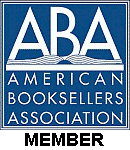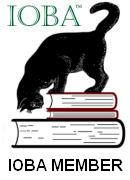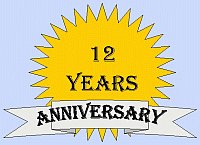 When book collecting is discussed, one of the most frequent type of collecting that comes up is the collecting of 'First Editions'. The meaning of first edition is slightly different for book publishers than it is for collectors. Publishers consider a first edition as all copies of a book printed from substantially the same setting of printing type, including all the minor typographical variations that might exist. These variations can arise from something as minor as a revised dust jacket with additional advertising 'blurbs', photos, or price to variations that come up as typesetting errors or broken type are discovered and corrected within the first printing. For collectors though, First Edition has a meaning closer to what is often called the 'First State' of the 'First Printing' and generally First Edition collecting is based on the idea that the First Edition of the book is the first commercial publication of a book, even if it appeared earlier in another form such
When book collecting is discussed, one of the most frequent type of collecting that comes up is the collecting of 'First Editions'. The meaning of first edition is slightly different for book publishers than it is for collectors. Publishers consider a first edition as all copies of a book printed from substantially the same setting of printing type, including all the minor typographical variations that might exist. These variations can arise from something as minor as a revised dust jacket with additional advertising 'blurbs', photos, or price to variations that come up as typesetting errors or broken type are discovered and corrected within the first printing. For collectors though, First Edition has a meaning closer to what is often called the 'First State' of the 'First Printing' and generally First Edition collecting is based on the idea that the First Edition of the book is the first commercial publication of a book, even if it appeared earlier in another form such  as in a periodical or as advance copies, and is the a printing generally offered for sale in book stores. This point of view places special emphasis on the fact that each change of type within a printing represents a particular variant or 'State' of that First Printing. For collectors, the first or earliest State of a First Printing is the most desirable. Because of this, the desirability of the First State of a First Printing also makes it the most valuable of all the variants or States of the First Printing.
as in a periodical or as advance copies, and is the a printing generally offered for sale in book stores. This point of view places special emphasis on the fact that each change of type within a printing represents a particular variant or 'State' of that First Printing. For collectors, the first or earliest State of a First Printing is the most desirable. Because of this, the desirability of the First State of a First Printing also makes it the most valuable of all the variants or States of the First Printing.This emphasis by collectors on First Edition Collecting is of course based on the fact that book collecting is generally based that the earliest the printing the better as far as desirability and thus value. There is a practical basis for book collecting focusing for the most part on the fact that at one time books were printed with relatively soft lead metal plates that would begin to show wear with use. Because of this, later editions or printings made from the original printing plates would have a better print quality that was easier to read as well as being more attractive. Over time, even though printing technology developed more durable materials for printing, what was considered the 'best' and most desirable copy or state of any book is the First State of the First Printing. Contemporary reasoning behind the value attributed to a book's earliest printing is generally based on the fact that it is assumed to be one of the closest version's to the author's intent and this also gives earliest printings their greatest desirability. The result is that for 'First Edition' collecting, 'the earlier the better' is a basic rule of desirability and therefore value.
 With all this in mind, it is easier to see why the value of some books can be so much greater than others. An author's reputation or the significance of a book culturally or historically sets the stage for value. Generally, any author's first book or even early books are generally printed in small initial print runs. This is because publishers are careful to minimize their risk. Until an author has established his or her reputation, any publisher will prefer to print only enough copies to meet demand and hopefully sell out. So for collectors, the most desirable and therefore most valuable first editions are the earliest
With all this in mind, it is easier to see why the value of some books can be so much greater than others. An author's reputation or the significance of a book culturally or historically sets the stage for value. Generally, any author's first book or even early books are generally printed in small initial print runs. This is because publishers are careful to minimize their risk. Until an author has established his or her reputation, any publisher will prefer to print only enough copies to meet demand and hopefully sell out. So for collectors, the most desirable and therefore most valuable first editions are the earliest  printing or state of an important author's earliest book.
printing or state of an important author's earliest book.One of the most interesting variants of early printings is the manuscript copy and related pre-publication printings. Manuscript copies are of course the very closest to the author's original intent. Often they contain additional markings and changes reflecting the author's thinking and creative work. Essentially, there is only one manuscript copy though the scarcity of this most desirable variant of the states of a published book is only accessible to institutional collectors or other major collectors of authors' personal papers and writings. Their uniqueness makes manuscript collecting impractical to consider for the general book collector, unless they have almost limitless funds available with which to build their collection. There is a slightly later state of a book's first printing that is considered pre-publication and which is still quite scarce, even in relation to a first printing of an author's early work, nonetheless, it is usually availability if only for a short time to perceptive collectors. This state of a published book is most commonly called the uncorrected proof.
 Uncorrected proofs were originally produced as an aid to the original typesetting for a book's first printing. The author and one or more proofreaders would usually edit these proofs and in order to provide space for edition, proofs were produced in the form of what are called galley sheets with a long black space below the text on each page. Unfortunately for collectors, an uncorrected proof with the author's notes and revisions is about as unique and rare as an original manuscript copy. Often though, multiple printings of uncorrected proofs would be produced to be distributed to influential reviewers in order to develop interest in an upcoming work by a new author or an existing author's new book as well as for soliciting 'blurbs' or short endorsements by notable writers suitable for printing in promotional material or on book dust jackets. Unfortunately galley proofs are awkwardly sized because of the nature of their production, being particularly long to aid the addition of editing notes.
Uncorrected proofs were originally produced as an aid to the original typesetting for a book's first printing. The author and one or more proofreaders would usually edit these proofs and in order to provide space for edition, proofs were produced in the form of what are called galley sheets with a long black space below the text on each page. Unfortunately for collectors, an uncorrected proof with the author's notes and revisions is about as unique and rare as an original manuscript copy. Often though, multiple printings of uncorrected proofs would be produced to be distributed to influential reviewers in order to develop interest in an upcoming work by a new author or an existing author's new book as well as for soliciting 'blurbs' or short endorsements by notable writers suitable for printing in promotional material or on book dust jackets. Unfortunately galley proofs are awkwardly sized because of the nature of their production, being particularly long to aid the addition of editing notes.  By the 1930s and 1940s a new sort of advance copy of books began to be produced. An Advance Copy at this time was a set of the complete typeset pages of a book about to be released that were then bound directly into the upcoming book's dust jacket, usually with staples. This allowed reviewers to see what the finished book would look like as well as be able to read the book and, hopefully, provide favorable reviews that would stimulate interest in it just before it would be available in bookstores. For this sort of purpose though this form of Advance Copy was not as useful as it could be because it could not be produced and distributed until just before the initial book printing was close to completion. What changed all this and dramatically opened up marketing possibilities for publishers was the introduction of the technology of large-scale paperback production in the 1930s and 1940s.
By the 1930s and 1940s a new sort of advance copy of books began to be produced. An Advance Copy at this time was a set of the complete typeset pages of a book about to be released that were then bound directly into the upcoming book's dust jacket, usually with staples. This allowed reviewers to see what the finished book would look like as well as be able to read the book and, hopefully, provide favorable reviews that would stimulate interest in it just before it would be available in bookstores. For this sort of purpose though this form of Advance Copy was not as useful as it could be because it could not be produced and distributed until just before the initial book printing was close to completion. What changed all this and dramatically opened up marketing possibilities for publishers was the introduction of the technology of large-scale paperback production in the 1930s and 1940s. Paperback printing and binding technology provided publishers with the ability to produce a new type of Advance Copy. The lower expense of the paperback format and the fact that early proof printings could be produced lead to a special 'uncorrected' or pre-publication version option for publishers to use for promoting an upcoming book. What today is fairly widespread, the production of a bound special Advance Reader Copy, Advance Uncorrected Proof, or some otherwise labeled pre-publication promotional printing, came into widespread use through the efforts of one company, the Crane Duplicating Service. This company aggressively promoted the cost-effectiveness of their product, advance editions, to the entire publishing industry.
Paperback printing and binding technology provided publishers with the ability to produce a new type of Advance Copy. The lower expense of the paperback format and the fact that early proof printings could be produced lead to a special 'uncorrected' or pre-publication version option for publishers to use for promoting an upcoming book. What today is fairly widespread, the production of a bound special Advance Reader Copy, Advance Uncorrected Proof, or some otherwise labeled pre-publication promotional printing, came into widespread use through the efforts of one company, the Crane Duplicating Service. This company aggressively promoted the cost-effectiveness of their product, advance editions, to the entire publishing industry.  This sort of book printing, generally called "uncorrected proofs', which for a while were actually called 'Cranes', was the first practical solution to the publishers' needs to promote books early enough to effectively publicize upcoming books. Early 'Cranes' or 'Uncorrected Proofs' were spiral bound or ring bound and frequently were on tall sheets of paper, obviously taken directly from the publishers' original galley proofs, but this was still a great improvement over galley proofs, loosely gathered typeset pages, or advance copies made from typeset pages, the only other options available.
This sort of book printing, generally called "uncorrected proofs', which for a while were actually called 'Cranes', was the first practical solution to the publishers' needs to promote books early enough to effectively publicize upcoming books. Early 'Cranes' or 'Uncorrected Proofs' were spiral bound or ring bound and frequently were on tall sheets of paper, obviously taken directly from the publishers' original galley proofs, but this was still a great improvement over galley proofs, loosely gathered typeset pages, or advance copies made from typeset pages, the only other options available.As time passed, these new paperback inspired 'Cranes' or 'Uncorrected Proofs' have generally come to be called 'Advance Reader Copy' or 'ARC' printings and they are frequently as well bound as most trade paperbacks. It is important for collectors to note that even though the cost of production for Advance Reading Copies is less than advance copies made up by binding typeset sheets or by sending out production copies before the release date as advance review copies, the small production runs of all Advance Reading Copy editions still made each copy relatively expensive to produce. Usually a small production run of ARCs will cost about as much as a full production run of five thousand or so trade bound copies. The advantage for a publisher is that these ARCs or proof copies are currently the best way to distribute a book to potential reviewers or others who are influential in generating interest in an upcoming title.
 As a result of the relatively high cost per copy, ARC/proof printings are often done in quite small numbers. Not infrequently these are essentially 'hand bound' printings that may number as few ten to thirty copies or so. If a publisher's pockets are deep enough, the advantages of producing a significant volume of ARCs and the resulting promotional benefits might result in the decision to produce an ARC/proof printing of as much as five hundred to a thousand copies. In that case, there is a strong effort for all of these ARCs to be given out to their intended audience of influential retail store buyers and management as well as reviewers and retail chain
As a result of the relatively high cost per copy, ARC/proof printings are often done in quite small numbers. Not infrequently these are essentially 'hand bound' printings that may number as few ten to thirty copies or so. If a publisher's pockets are deep enough, the advantages of producing a significant volume of ARCs and the resulting promotional benefits might result in the decision to produce an ARC/proof printing of as much as five hundred to a thousand copies. In that case, there is a strong effort for all of these ARCs to be given out to their intended audience of influential retail store buyers and management as well as reviewers and retail chain buyers. It is important to note that most publishers consider the exact numbers of copies in ARC/proof printings trade secrets, but that there is some historical information available that illustrate the relative scarcity of ARC/proof printings. Kurt Vonnegut's book 'Slaughterhouse-Five' had thirty-nine advance copies produced and one Philip K. Dick novel is known to have had only nineteen advance copies printed. Generally then, it is safe to assume that most ARC/proof printings are less than five hundred and the average printing for any ARC/proof printing is most likely to be about two hundred copies.
buyers. It is important to note that most publishers consider the exact numbers of copies in ARC/proof printings trade secrets, but that there is some historical information available that illustrate the relative scarcity of ARC/proof printings. Kurt Vonnegut's book 'Slaughterhouse-Five' had thirty-nine advance copies produced and one Philip K. Dick novel is known to have had only nineteen advance copies printed. Generally then, it is safe to assume that most ARC/proof printings are less than five hundred and the average printing for any ARC/proof printing is most likely to be about two hundred copies. With all of this in mind, the importance to collectors in acquiring the earliest 'state' of a book, the early 'state' of an ARC/proof printing because it is printed before final editing is completed, and its scarcity because ARC/proof printings are produced in such small relative numbers because of their relatively high per-copy costs to produce, makes ARC/proof editions potentially more desirable than typical first printings. Oddly, the very volume of publishing masks the value of ARC/proof printings when they are initially available. There is no doubt that just as proofs of Hemingway or Margaret Mitchell say, are quite valuable and only accessible to the wealthiest collectors and institutional collectors, some ARC/proof titles of contemporary fiction become quite valuable. Unfortunately for most collectors who may be too shortsighted or conservative to invest early, by the time a book is recognized for its value, its proof copies have become quite scarce and desirable and command correspondingly high prices. For example: an advance proof copy of Rowling's first Harry Potter book,
With all of this in mind, the importance to collectors in acquiring the earliest 'state' of a book, the early 'state' of an ARC/proof printing because it is printed before final editing is completed, and its scarcity because ARC/proof printings are produced in such small relative numbers because of their relatively high per-copy costs to produce, makes ARC/proof editions potentially more desirable than typical first printings. Oddly, the very volume of publishing masks the value of ARC/proof printings when they are initially available. There is no doubt that just as proofs of Hemingway or Margaret Mitchell say, are quite valuable and only accessible to the wealthiest collectors and institutional collectors, some ARC/proof titles of contemporary fiction become quite valuable. Unfortunately for most collectors who may be too shortsighted or conservative to invest early, by the time a book is recognized for its value, its proof copies have become quite scarce and desirable and command correspondingly high prices. For example: an advance proof copy of Rowling's first Harry Potter book,  which had only two hundred copies produced, if it can even be found on the market, is likely to bring more than $5,800. Even important literary fiction such as 'Cold Mountain', a book less than ten years old, would value at about $100 or more for an ARC/proof copy in fine condition.
which had only two hundred copies produced, if it can even be found on the market, is likely to bring more than $5,800. Even important literary fiction such as 'Cold Mountain', a book less than ten years old, would value at about $100 or more for an ARC/proof copy in fine condition.The lesson for collectors interested in investing in ARC/proof editions is that the window of time in which ARC/proof copies are available at reasonable prices is relatively brief. It is also important to note that a typical ARC/proof copy will always be many times scarcer than even the smallest print runs of first edition books. For collectors of contemporary literature, a genre that did not really take off until the late 1970s or early 1980s, it is probably best for a serious, patient collector to speculate on the most promising writers. If a collector builds his or her collection carefully, ARC/proof copies will always represent textually significant versions of authors' works as well as being commercially more scarce and unusual than even traditionally desirable first trade printings have been.
Advance Reading Copy and Uncorrected Proof collecting highlights
Not uncommonly, ARCs are produced in more than one version. Often the earliest version of ARC/proof editions takes the form of a plain paper cover with no more than a simple textual description of the title, publication date, and author. Usually a later ARC/proof edition, when there are multiple printings of it, will have a glossy cover, closer to or even identically matching the final publication graphics of the book's dust jacket. A good rule of thumb is to assume that plain paper copies are produced in significantly smaller printings than later glossy issues. For the publisher, this differentiation reflects different intended purposes. The plain paper ARC/proof editions are usually used for generating author's corrections and revisions as well as for soliciting 'blurbs' from established writers. The glossy later ARC/proof editions are primarily used for promotional purposes and are sent to sales reps, bookstore chain buyers, and influential reviewers.
It is also important to note that, generally, there is no reliable way to interpret publishers’ labeling of ARC/proof copies for indications of significant textual changes between ARC/proof printings. Generally, ARC/proof printings have come more and more to represent publisher's marketing efforts. Because of this as well as changes in printing and binding technologies, traditional processes of book production, which have in the past proceeded from galleys, to uncorrected bound proofs, to advance reading copies, to publication copies, are unlikely to be religiously followed by contemporary publishers. The various typical names publishers give to ARC/proof printings and which collectors will most likely encounter include but are not limited to: Uncorrected Manuscript, Uncorrected Bound Galleys, Uncorrected Page Proofs, Uncorrected Proof, Uncorrected Proof Copy, Uncorrected Advance Proof, Advance Uncorrected Proofs, Advance Copy, Advance Reading Copy, Advance Reader's Copy, Advance Reader's Edition, and Advanced Reading Copy. As previously noted, this nomenclature is unlikely to denote actual printing states of modern ARC/proof copies with corresponding variations in textual content between printings. Variation in text content within a book's ARC/proof printings is most likely to occur between its plain paper ARC/proof printing and a later slick-cover ARC/proof version.


The Collectability of Proofs and other Types of Advance Editions by Steven Williams is licensed under a Creative Commons Attribution-Noncommercial-No Derivative Works 3.0 United States License.
Permissions beyond the scope of this license may be available by contacting Steven Williams through Bookmarc's BookmarcsOnline.











